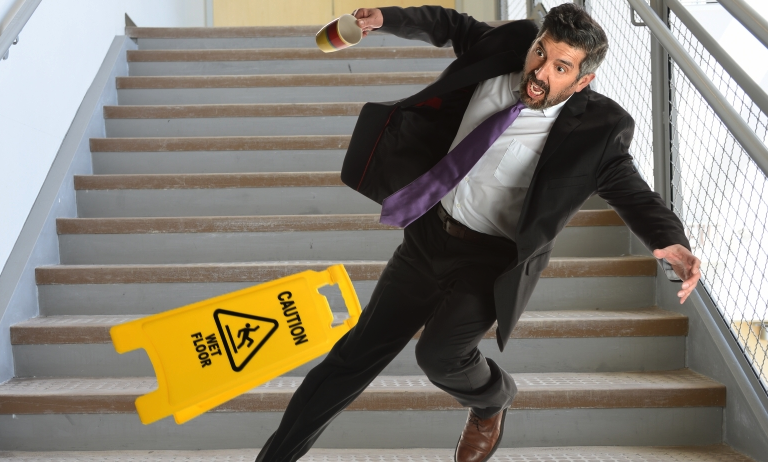 There are measures that can be put into place to significantly reduce these risks listed below
There are measures that can be put into place to significantly reduce these risks listed belowEmployers spend over £73million annually on employee leave due to Slips, Trips and Falls in the workplace, according to new research by Safety Services Direct.
During 2017/2018, 31% of all non-fatal workplace injuries were caused by Slips, Trips and Falls; with an estimated 172,050 cases self-reported by employees.
The Health & Safety Executive also reports that 75% of all self-reported incidents result in up to seven days of absence, meaning that employees are on leave for almost 130,000 days annually: a wasted cost to any employer.
The irony is that slip, trip and fall injuries are some of the easiest to prevent in the workplace. There are measures that can be put into place to significantly reduce these risks such as:
1. Keep walking surfaces clean and avoid cluttering
When walkways are clear, the risk of injury greatly reduces. With a path that is unobstructed, the chance of a person falling over an object reduces, as does the potential of a spill that could create a dangerous slipping hazard.
2. Lighting
A workplace with effective lighting inside and outside of the building helps reduce the chances of an accident. By illuminating areas that are commonplace for trips and falls to happen, you can shine a light on hidden dangers. This will reduce any chance of an accident.
3. Signage
Using health and safety signs that are clear and well placed helps identify areas with potential problems. Placing a sign that indicates a step, gap or an uneven ground brings attention to hazards and increases their awareness and attentiveness. Reflective tape can also highlight issues.
4. Stairs/Handrails
Do your stairs have handrails? Is reflective tape used to mark the top and bottom of the stairs? Are there any unsecured carpets or rugs that you have had to remove from the stairs? Stairs are one of the most common areas for falls to happen in the workplace. Additional care is required here to prevent injuries. Keep all stairwells well-lit and clear of obstacles.
5. Footwear
Do your employees know which safety footwear is appropriate for the conditions they are working in? Make sure your workforce know clearly what attire is needed.
6. Step Ladders
Providing accessible equipment such as ladders and step ladders helps employees reach heights safely. By ensuring options are available, this reduces the possibility of an employee being hurt by climbing on chairs or tables.
7. Manage Wires
https://recruitingtimes.org/wp-admin/post.php?post=27021&action=editWires that are out in the open can create obstacles for employees and the public which could cause injury. Cables should be put behind walls or under carpets so they remain hidden. Install all power sources, servers, internet connections in places that can be easily accessed, to avoid cables appearing along walkways.
8. Check Condition of the Floor
Cracks and holes in the pavement on the outside should be filled in. Repairing them immediately will reduce the risk of any injury happening. When an area is waiting to be fixed, warning signs should be placed to highlight the danger.
9. Keep Filing Cabinets and Drawers Closed
Everybody has to open a filing cabinet or a drawer during the day, but leaving them open can lead to injury. Staff should be encouraged to ensure all drawers and cabinets are closed when not used to avoid potential dangers.
10. Clean Up Spills Immediately
If a spill happens in a workplace, it should be cleaned up immediately. If certain liquids penetrate the surface, it can actually cause a surface to be more slippery than before after it has been cleaned up. When a spill takes place, warning signs should be placed around the hazard immediately, and whilst the clean-up of the wet floor takes place. If a floor is known to be slippery anyway, this needs to be highlighted with an appropriate sign.
Recruiters love this COMPLETE set of Accredited Recruitment & HR Training – View Training Brochure








